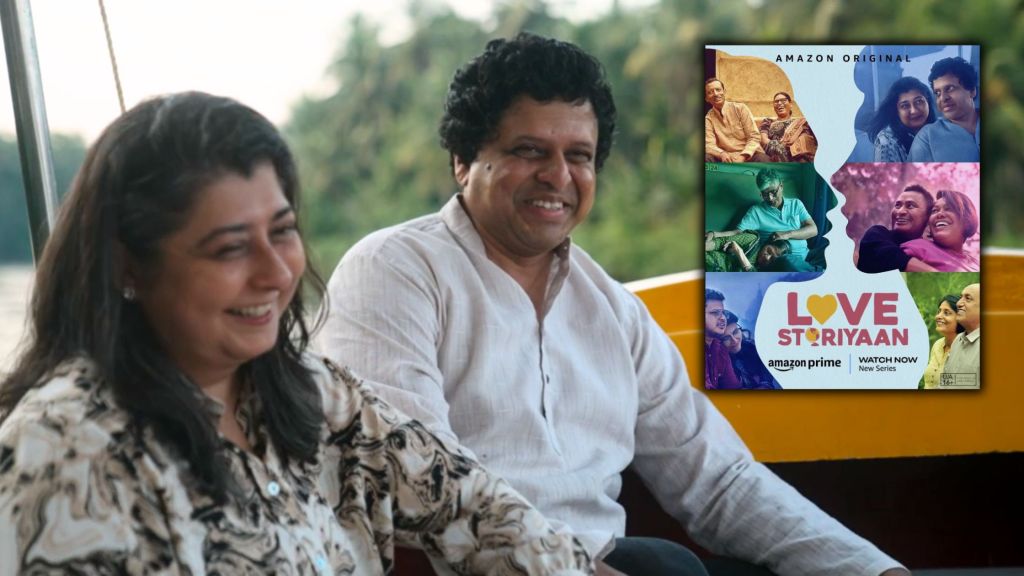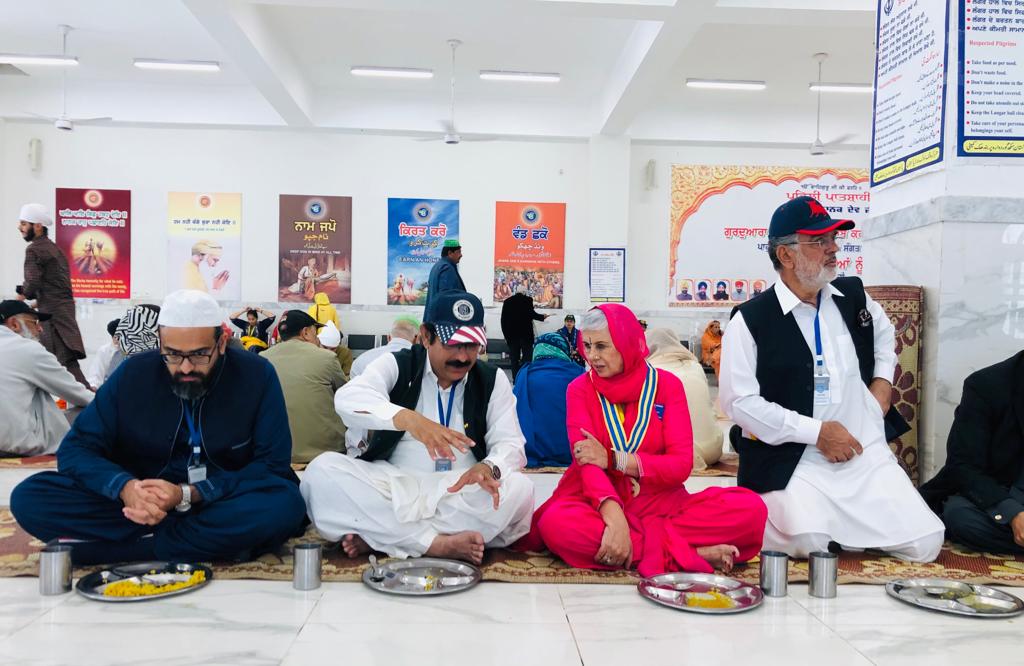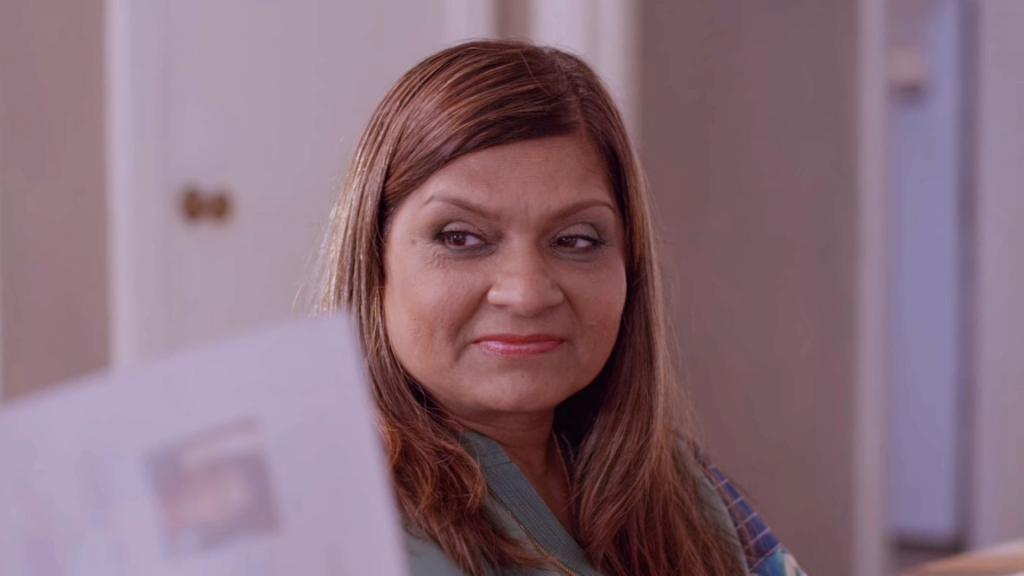YVES SAINT LAURENT was in the middle of a busy day. It was 1976 and the then 40-year-old fashion designer, already at the peak of his profession, was meeting scores of models who had stopped by his Paris studio to audition for his upcoming haute couture collection. The pretty girls—for most of them were barely 20 years old—vied with one another for his personal attention. In walked Kirat Bhinder, a tall, dusky, wide-eyed teenager from India with no ramp experience, who had just months ago arrived in London to study Fashion and was on a holiday in the French capital. A journalist friend in the city had advised her to meet Saint Laurent, and, eager to meet the game changer in global fashion, the sassy beauty had agreed. A natural ‘chatterbox’, Kirat ‘parked herself’ in front of the shy but charming Algerian-born designer, talking animatedly about her life in India as he observed her twirl about in his gowns. A few minutes later, as she walked down the stairs to exit his opulent kingdom, she was told, “You’re hired.”
What happened next is the stuff of supermodel dreams. The collection, Ballet Russes, was a watershed moment in fashion history. Not only was it the first haute couture collection to be presented outside of a top designer’s own couture house—the fashion show was held at the luxurious InterContinental Hotel instead—it also sparked the age of ‘ethnically inspired’ fashion, replete with swathes of metallics and a riot of colours rarely seen on Parisian runways. Coming from the legendary designer of‘Le Smoking’ line of—hold your breath—tuxedos for women, Ballet Russes went all the way to Russia and back, bringing with it bright, feathery, flamboyant displays of decadence that would set the tone of high fashion in the coming decade.
And the face that launched a thousand flashbulbs? That was Kirat. “I had the perfect exotic look they needed for such an out- of-the-box collection,” says the former model now known as Kirat Young, the first Indian supermodel on the world’s most prestigious ramps and Yves Saint Laurent’s muse for the next 12 years. Her journey would take her across Europe, the Americas, Asia and Australia, as she sashayed with her own inimitable joie de vivre and haughty grace on runways for designers such as Saint Laurent, Versace, Armani, Valentino and Chanel, eventually leading her to launch her own eponymous line of eclectic jewellery.

Kirat’s jewels—made in Thailand and India—are sold worldwide through select retailers, and she counts several celebrities among her private clients. She jetsets between her homes in London, Paris, Bangkok and Delhi, frequently entertaining her famous guests with chic cocktail nights that invariably end up on page three of local newspapers. She has an exclusive fine-jewellery line for fashion legend Oscar de la Renta—the late designer was a dear friend and, as one of his favourite muses, Kirat was part of a gala to celebrate a retrospective of his works earlier this year. She has also collaborated with luxury retail baroness Tory Burch, who often wears Kirat’s designs. A profile and photo shoot of Kirat published in the New York Times in December 2016 quotes the popular American designer as saying, “Kirat Young is incredibly chic and talented. Her intricate designs reflect an extraordinary attention to detail and a worldly sophistication.”
Whether for her parties and social network or her influence in the world of fashion, the designer is accustomed to being in the news. With ethnic identity being the buzzword in recent fashion trends worldwide, Kirat’s unique brand of fusion jewellery is ever more attractive to consumers looking for a ‘story’ or cultural motifs in what they buy and wear. She uses materials such as silver, polki diamonds, and precious and semi-precious gems from India, and stingray leather from fish farms in Thailand, and gives them her own stamp of sophistication. “My aesthetic is French, but my influences are Asian. I am a changeling. My strength is that I can adapt,” says the former model, whose life choices have been just as spunky and charmed as her career landmarks.
The daughter of an Indian Air Force officer and a doctor in the Ministry of Health, Kirat was born to an open-minded, progressive Indian household in Punjab. When she was a few years old, her mother joined the World Health Organization, and soon won a scholarship to the University of California at Berkeley. Kirat was packed off in the 1960s to Welham Girls’ School in Dehradun, where she spent the rest of her school years. The period was bittersweet: her parents separated (“My mother was too independent- minded; they didn’t get along”), but the teenaged Kirat also loved her time in boarding school. She has no patience for those—like filmmaker Deepa Mehta, Kirat’s senior in Welham—who complain about growing up away from home. “We were so much freer there than at home, even if we had to read Gone with the Wind with a torch under our blankets in the dead of night,” she says in her characteristic blunt way, sipping on black tea in a friend’s palatial home on Feroze Shah Road in central Delhi while on a short trip en route from Paris to Bangkok. She is wearing a black wrap dress by Oscar de la Renta and her own jewellery on the day we meet. It is apparent that, even after all these years, she has not lost an iota of her youthful exuberance and enthusiasm for new adventures.
KIRAT FINISHED HER A-levels from London and was propelled into modelling soon after. With stardom came love, and she ran headlong into nuptials with the son of a wine merchant when she was just 20. “We had an exotic Indian wedding at Christian’s cousin’s castle,” she reminisces. “The family was typical French bourgeoisie, and they have respect for culture. My mother-in-law gifted me a Chanel bag—back then, I thought it was old-fashioned and boring, but now I realise its value. My father-in-law called me his ‘petit Indienne’, and took me on as his ‘cultural’ protégé from day one.” The first step in her French education was wine-tasting in Bordeaux, followed by many other such introductions to the French way of life, including culinary skills and the habit of sitting for hours in quaint roadside cafes. “You adopt their clothes, you speak their language, you accept their wine and food, and they are happy to accept you into their midst,” she notes, contrasting her experience in France, where she became one with the French, with her years in England, where she was always conscious of her foreignness.

Kirat’s first marriage lasted eight exciting years—she had wings on her feet and was at the peak of her modelling career, jumping from continent to continent in the best clothes and staying at the best places money could buy. But the edges of the relationship began to fray when Christian demanded they “settle down and have kids”. “I hate the term ‘settle down’. I liked living different lives,” she recalls with an exasperated shake of her well- coiffed head. “He dared me to divorce him, and I did.” (Ironically, she adds, he had a short marriage and painful divorce with another “femme Indienne exotique” soon after, and he never did have kids.) “But we are great friends and we meet often. We live in the same city, after all,” Kirat says in her husky voice, with the worldly wisdom of one who has been there, done pretty much all that.
Kirat continued modelling for a few years and then decided to quit the profession—she was in her early thirties, retiring age for supermodels back then. But her designer friends Oscar de la Renta and Gianni Versace convinced her to do one last show in Australia—it was the year 1988 and the country was celebrating the bicentenary of its founding. The Australian Wool Corporation and the International Wool Secretariat had planned a fashion extravaganza to showcase the nation’s famous Merino wool. The event was to be held at the Sydney Opera House with Princess Diana and Prince Charles as guests of honour. Nine of the world’s greatest fashion designers would show their collections for the first time on the same runway: Donna Karan, Kenzo, Missoni, Versace, Oscar de la Renta, Montana, Bruce Oldfield, Sonia Rykiel and Jean Muir. The event was to be telecast live throughout the world.
“One last show? Why not,” Kirat decided, and set off to see a new land. It was a fortuitous step. The event turned out to be “a very big deal”, spread over several days of parties, sports events and cultural presentations—even protests and controversy—and was attended by the who’s who from around the world. By “sheer fluke”, Kirat met Australian hotelier Tony Young at one of the several parties, and immediately fell in love. Tony was almost a decade older than her and had a daughter from a previous marriage. They had a whirlwind romance, living and travelling together from Europe to Australia, until the CEO and president of the Southern Pacific Hotel Corporation finally asked her to marry him. “A French friend asked, ‘Are you really going to marry that savage?’ It was incomprehensible to him that I would leave Paris high society for an unknown new civilisation,” she laughs, explaining that she had turned down a marriage proposal from a French baron a short while earlier. France was familiar—and boring— turf while the idea of a brand new life down under was irresistible.
Kirat moved to Sydney, accompanying her busy spouse on his trips across the boonies of Australia, to Fareast Asia, Fiji and New Zealand, where he ran his chain of hotels. “We went to Tahiti 20 times in 13 years,” she laughs in remembrance. It was an affluent, exciting life, and she was a fun, cheerful partner to her doting husband. She did up his various homes with all the flair of a consummate Parisian aesthete, organising elegant, elite soirees for their powerful friends, and managing his day-to-day affairs with her vivacious charm. He never reined her in; she was free to fly to Paris to meet her friends, London to meet her mother (who lived alone), or Delhi to meet her father (who had married again by then) over a weekend or two.
Tragedy struck on February 21st, 2000, while the couple was in Bangkok. A fit man otherwise, Tony had a cardiac arrest and passed away in a matter of minutes. “I have done much research on this now,” Kirat says, a slight mist over her eyes the only giveaway of emotion in her otherwise strong, expressive demeanour. “He was 52, and at that age, you have a heart attack and that’s it.” Kirat was left alone, away from her friends and family in a foreign land. Tony’s business associates insisted on a funeral service in English for him—“Do you know how hard it is to find an English- speaking Christian priest in a Buddhist non-English-speaking country at a day’s notice?”—and Kirat found herself in the unenviable position of organising three memorials over the next 12 days, one in Bangkok, the next in his birthplace in New Zealand where his daughter requested his body be buried, and finally in Sydney. Tony’s will was executed, and his daughter and wife sold off his business interests before leaving Australia to begin the next chapter of their lives.
Kirat flew back to Bangkok, and, after weeks of the frenetic activity that death brings in its wake, finally collapsed in grief and depression. She called her father and stepmother in Delhi to come and live with her; she could not bear being alone. “You know, I had been hospitalised before and I had survived my own personal tragedies all by myself. I had broken an elbow as a model and needed a four-hour operation. I had had a miscarriage in my second trimester while I was married to Tony, and had to stay in hospital for a month. Both times, I was alone in Paris; there was no one with me. But I did it, I am a survivor, I came out bruised but alive,” she mulls. And yet, at 43, the sorrow of losing a loved husband broke Kirat. She could not face the desolation alone.

It took a while for the diva to pick up the pieces of her life and move back to Paris. She began dabbling in jewellery design, making pieces for herself and friends. One day, de la Renta saw her designs and decided to buy the entire range for his wife Annette. “It was an organic start,” Kirat recalls, sharing another incident with an amused grin: “I was at a St Moritz resort wearing an emerald pendant I had made and a senior Cartier executive just bought it off me.” Soon, it became her full-time profession and, with a little help from her well-connected friends, she became an international brand, patronised by the likes of actor-businessman-politician Arnold Schwarzenegger and the late New York socialite Nan Kempner.
Love came knocking for a third time at Kirat’s door during a holiday in Miami in 2002. She was introduced at a party by an Italian-French couple to Élie de Dampierre, a French Marquis. The long-distance relationship finally culminated in their buying a home together in Thailand, besides her own existing apartments in London and central Paris. They now shuttle to each location every few months. Her mother, now in her nineties, lives by herself in London. Her father passed away last year at the age of 96, but she meets her stepfamily every time she visits Delhi. She arrived here in late November to check on her jewellery production—this time, however, demonetisation played dampener and her usual workers had left for their villages for lack of work and income before she came. A business associate suggested that she hold an exhibition for her latest collection; but wealthy Indian matrons were sceptical when they realised some of the pieces were made using stingray skin. “I will have to put a vegetarian and non- vegetarian tag next time I show in Delhi,” Kirat jokes.
Her svelte, sprightly frame and buoyant spirit defying her age, Kirat is not averse to marrying Élie even now: “Many of our friends are getting married in their sixties and seventies after decades of being together,” she laughs, “It is a thing these days. Who knows, maybe we will too.” As long as it doesn’t involve ‘settling down’, she is still game for new adventures.









Leave a comment